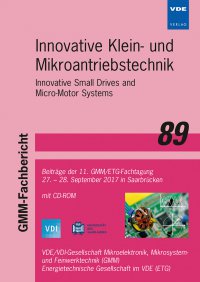Alternative materials for PM synchronous motors
Konferenz: Innovative Klein- und Mikroantriebstechnik - 11. GMM/ETG-Fachtagung
27.09.2017 - 28.09.2017 in Saarbrücken, Deutschland
Tagungsband: Innovative Klein- und Mikroantriebstechnik
Seiten: 6Sprache: EnglischTyp: PDF
Persönliche VDE-Mitglieder erhalten auf diesen Artikel 10% Rabatt
Autoren:
Huth, Gerhard; Loehlein, Bernd (Institute of Mechatronic and Electrical Drive Systems, Department of Electrical and Computer Engineering, Technical University of Kaiserslautern, Germany)
Inhalt:
Also in the field of small electrical motors, there is a clear trend towards energy efficiency improvement which makes the use of permanent magnet (PM) synchronous machines more and more attractive. The demand for a highly automated manufacture of motors favors tooth coil stator concepts requiring inherently a higher number of pole pairs. At higher speeds, specific measures have to be taken to reduce the core losses. In addition, a compact rotor design is necessary to keep eddy-current losses low. When designing the active part of a rotor and stator, SMC materials and duplex stainless steels are an appropriate choice. Soft magnetic composites (SMC) have already been used for the design of PM synchronous machines. In contrast, duplex steel is more or less unknown in the field of electrical machines. After an introduction of the two materials, the physical properties of the materials selected for the experimental model will be described and compared to those of electrical steel commonly used up to now. A stator concept consisting of SMC subcomponents and a one-piece rotor made of duplex steel is seen as a suitable solution. The rare-earth magnets can either be mounted on the rotor surface or integrated into the rotor body. Based on this concept, an experimental model will be designed and created based on FE simulations. The experimental model will be developed for an application with a speed setting range of up to 30,000 min-1. The test set-up developed will then be described and finally, the test results will be discussed by comparing them with those obtained from simulations.


